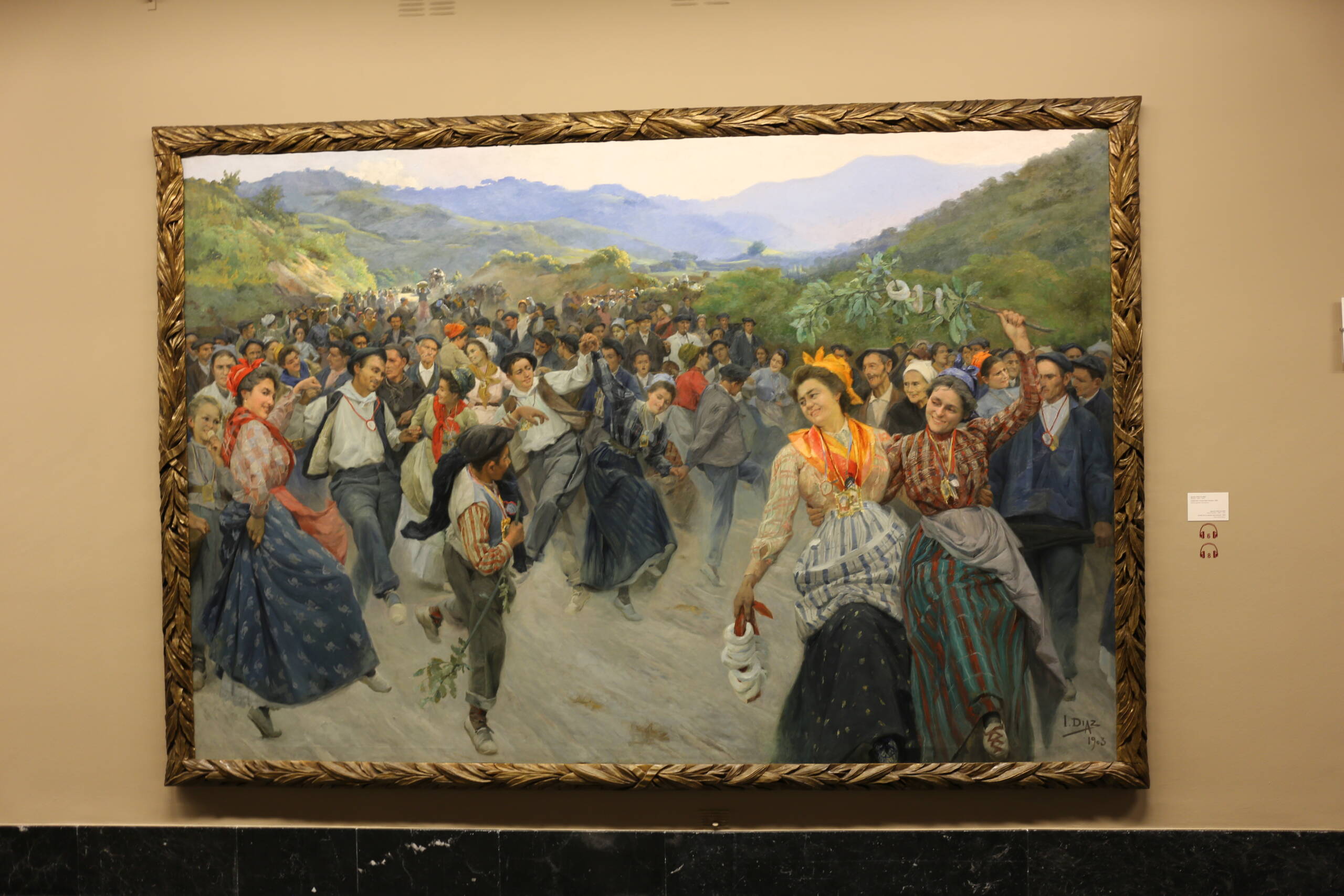Inside the Museo de Bellas Artes de Álava in Vitoria-Gasteiz, the galleries unfold not only as halls of art but as windows into the soul of Basque culture. Among the pieces that stand out is this large, exuberant canvas, where a whole community seems to spill across the frame in joyous motion. The scene is festive, alive with color and rhythm: women in patterned skirts and blouses swirl through the crowd, some adorned with bright sashes and medals, their faces lit with smiles. Men clap, sing, and dance alongside them, while the background dissolves into a lively mass of onlookers who follow the procession as it winds through a mountain valley.

The artist, Ignacio Díaz Olano—a celebrated Basque painter from Vitoria—captured not just a dance but an atmosphere. The energy of the fiesta vibrates through the brushstrokes, from the flushed cheeks of the dancers to the dust rising from the ground under their feet. You can almost hear the music, the shouts, the laughter. What’s remarkable is how Díaz Olano manages to blend the intimacy of individual expressions with the grand sweep of a collective celebration. It’s not just about two or three figures in the foreground but about an entire community moving together, a visual reminder of how central festivals and tradition are to Basque identity.
Seeing this painting within the walls of the old Augustin-Zulueta Palace adds yet another layer. You step from a stately, aristocratic mansion into the heartbeat of popular culture, from marble halls into dusty village streets alive with dance. It’s a reminder of how museums, at their best, bridge different worlds—letting us glimpse the elegance of high society alongside the vitality of everyday life.
Standing before this work, you don’t just observe art—you join the crowd, pulled into the fiesta, reminded that culture isn’t frozen in a frame. It’s lived, it’s danced, it’s celebrated. And for a traveler in Vitoria-Gasteiz, this painting captures in one vibrant sweep the spirit of the land outside the museum’s gates.
Leave a Reply